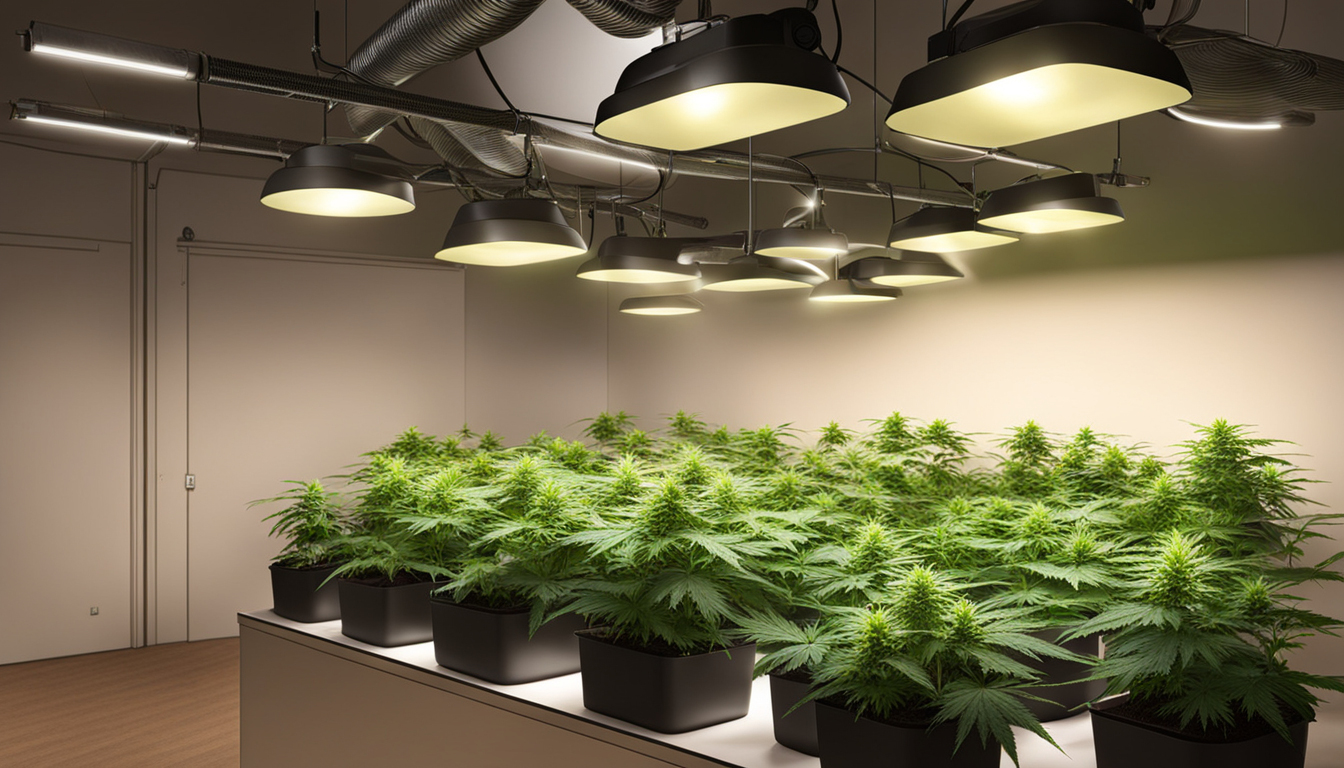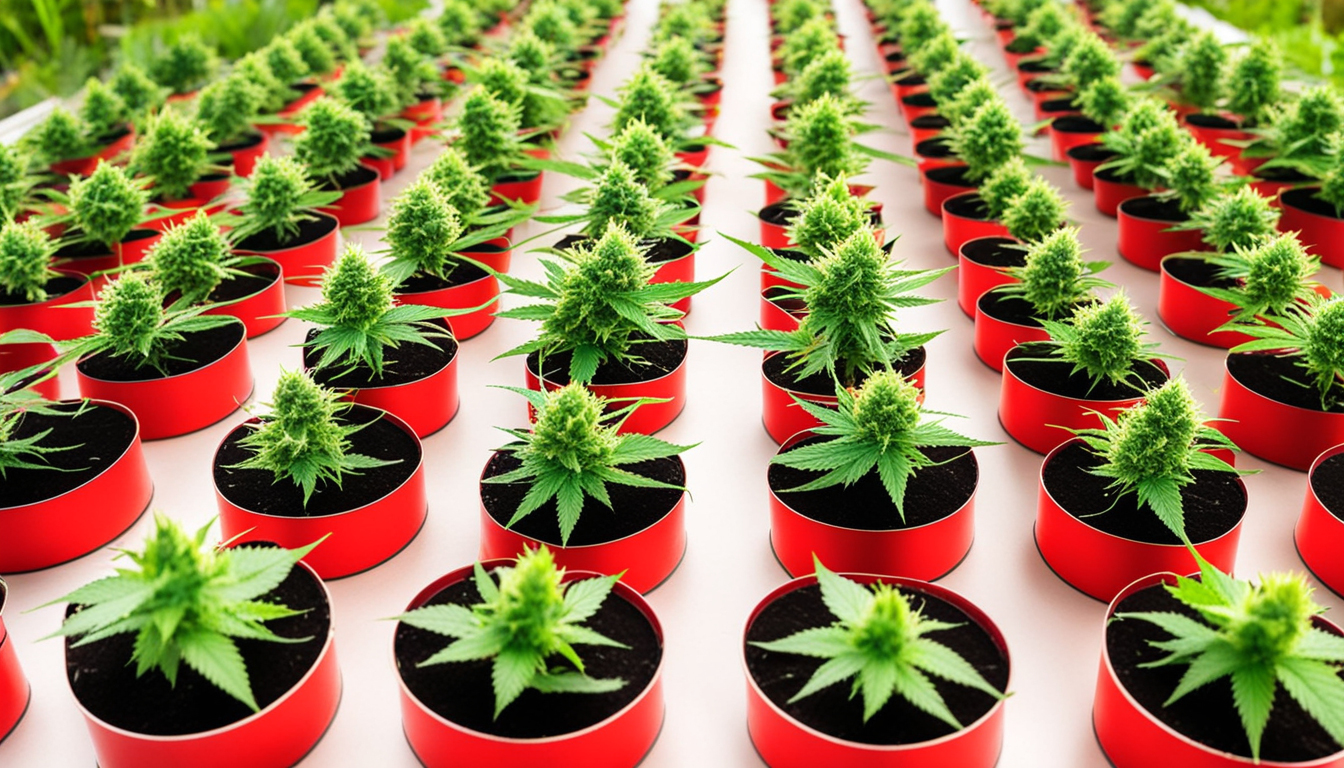
Whether you're new to weed cultivation or looking to improve your existing grow, following this complete guide will help you produce bountiful, high-quality yields right at home. With the right supplies, strategies, and care, growing cannabis indoors can be an extremely productive and cost-effective endeavor.
Choosing Marijuana Strains
The first step in planning your indoor grow is picking the right pot varieties to grow. The three main types of weed plants each have their own characteristics.
Energizing strains
Known for their invigorating intellectual effects, sativas spread tall and slender with narrow leaves. They flourish in warmer equatorial climates and have a longer blooming time between 10-12 weeks indoors. Top sativa strains include Sour Diesel, Durban Poison, and Jack Herer.
Relaxing strains
These strains provide relaxing full-body effects and spread short and bushy with broad leaves. Adapted to colder mountain climates, they flower faster within 2-2.25 months. Popular relaxing strains include Granddaddy Purple, Northern Lights, and Bubba Kush.
Mixed strains
Hybrid varieties mix traits from both sativas and relaxing strains. They offer blended effects and have medium flowering times around 9-10 weeks. Well-known mixes are OG Kush, Girl Scout Cookies, and Blue Dream.

Setting Up Your Cultivation Space
Cannabis plants need the right controlled environment to thrive. Key factors for indoor grows are lighting, airflow, layout, and finding the ideal discreet location.
Location
Choose an available space with easy access to irrigation and electrical outlets. An empty extra bedroom, unused closet, basement corner, or cultivation tent securely placed in a garage all make great discreet cultivation room spots.
Lights
Weed requires powerful light for all growth stages. LEDs are efficient and come in full spectrum options replicating natural sunlight. Provide 15-25 watts per square foot for the growth stage and 20-40 watts per square foot for bloom.
Ventilation
Proper airflow and exhaust systems keep ideal temperature, humidity, and fresh CO2 levels. Install low-noise 4-6 inch fans or scrubbers to circulate stale air and reduce smells.
Layout
Maximize your space by arranging plants carefully under the lights and leaving room to reach and work around them. Set up distinct zones for vegetation, flowering, curing, and propagation.

Cultivation Substrates
Pot can be grown in different mediums, each with benefits and cons. Pick a appropriate option for your particular setup and cultivation style.
Soil
The traditional substrate, soil is affordable and easy for beginners. It provides great flavor but requires more watering and fertilizing to feed plants. Enrich soil with vermiculite or coir to enhance aeration.
Coconut coir
Made from coir, renewable coconut fiber retains water but still allows air to the roots. It's cleaner and more predictable than soil. Use coco-specific nutrients to avoid accumulation.
Water systems
In water systems, plant roots develop right in fertilizer irrigation solution. This enables quick development but needs careful observation of solution properties. DWC and irrigation systems are popular methods.
Sprouting Seeds
Sprouting activates your cannabis seeds to begin growing radicles. This readies them for transplanting into their cultivation medium.
Towel Method
Put seeds between moist paper towel and keep them moist. Check after 2-7 days for emerging taproots showing sprouting is complete.
Planting directly
Insert seeds right into wetted growing medium 1⁄4 inch deep. Gently water and wait 1-2 weeks until sprouts push through the surface.
Rockwool Cubes
Presoak cubic rockwool starters in pH-adjusted water. Place seeds 6mm deep into the cubes. Keep cubes moist until seedlings emerge within 1-14 days.
Repotting Young plants
Once germinated, weed seedlings need to be transplanted to avoid crowding. Move them into proper sized pots.
Preparing Containers
Fill large containers with cultivation medium amended with slow-release nutrients. Allow pots to soak up water for 8-12 hours before transplanting.
Carefully Transplanting
Gently loosen young roots from germination medium using a spoon. Put into pre-soaked container at same depth as before and lightly water in.
Vegetative Stage
The vegetative stage encourages foliage and plant structure through 18-24 hours of continual lighting exposure. This stage usually lasts 4-8 weeks.
Using 18-24 Hours of Light
Use grow lights on a 24 daily schedule or natural sunlight to trigger nonstop growth. Light intensity influences height and internodal spacing.
Fertilizing
Use grow stage fertilizers higher in nitrogen. Make sure pH remains around 5.8-6.3 for proper fertilizer uptake. Feed 1⁄4 to 1⁄2 concentration after 14 days and increase gradually.
LST and topping
Fimming, LST, and scrogging direct shoot patterns for flat foliage. This increases yields.

Bloom Stage
The flowering stage grows buds as plants show their sex under a 12/12 cycle schedule. It lasts 2-3 months depending on variety.
Changing Light Schedule
Change grow lights to 12/12 or move outside for natural 12 hour cycle. This triggers plants to start blooming.
Stop Fertilizing
Leaching flushes out fertilizer residuals to improve flavor. Fertilize lightly the first weeks then just use plain water the last 2 weeks.
Flushing
Continue 12 hour photoperiod but flush using neutral pH water only. Resume plain watering if buds aren't yet mature after two weeks.
Reaping
Recognizing when weed is completely mature ensures peak potency and aroma. Harvest plants at optimal maturity.
Identifying Ripeness
Check swollen calyxes, faded pistils, and 5-15% cloudy trichs. Check buds around the plant as they don't all mature evenly.
Harvesting plants
Use clean, sharp trimming scissors to carefully cut each plant at the base. Keep 5-10cm of stem attached.
Curing
Suspend whole plants or branches inverted in a dark room with average temp and RH around 50-60% for 1-2 weeks.
Aging
Curing continues desiccating while improving the buds like aged spirits. This process smooths bitterness and intensifies cannabinoid and terpene profiles.
Curing containers
Trim dried buds from branches and place into glass jars, packing about 75% capacity. Use a hygrometer to measure container moisture.
Burping Daily
Open containers for a short time daily to slowly reduce moisture. Rehydrate buds if humidity drops below 55%.
Long term storage
After 14-21 days when moisture stabilizes around 55-65%, perform a last manicure and store long-term in sealed jars.
Troubleshooting
Even seasoned cultivators run into various weed plant problems. Identify problems early and address them properly to maintain a strong garden.
Poor feeding
Yellowing leaves often indicate insufficient nitrogen. Purpling stems and leaves signal low phosphorus. Test pH and boost nutrients gradually.
Pests
Spider mites, fungus gnats, mites, and nematodes are frequent pot pests. Use organic sprays, ladybugs, and sticky traps for natural control.
Mold
High humidity promotes botrytis and root rot. Increase circulation and venting while reducing RH under 50% during flowering.

Summary
With this complete indoor marijuana cultivation guide, you now have the knowledge to grow plentiful strong buds for private grows. Follow these steps and techniques throughout the germination, growth, and bloom stages. Invest in quality equipment Click Here and closely check on your plants. In time, you'll be compensated with frosty aromatic buds you grew yourself under the patient guidance of your green hands. Good luck cultivating!